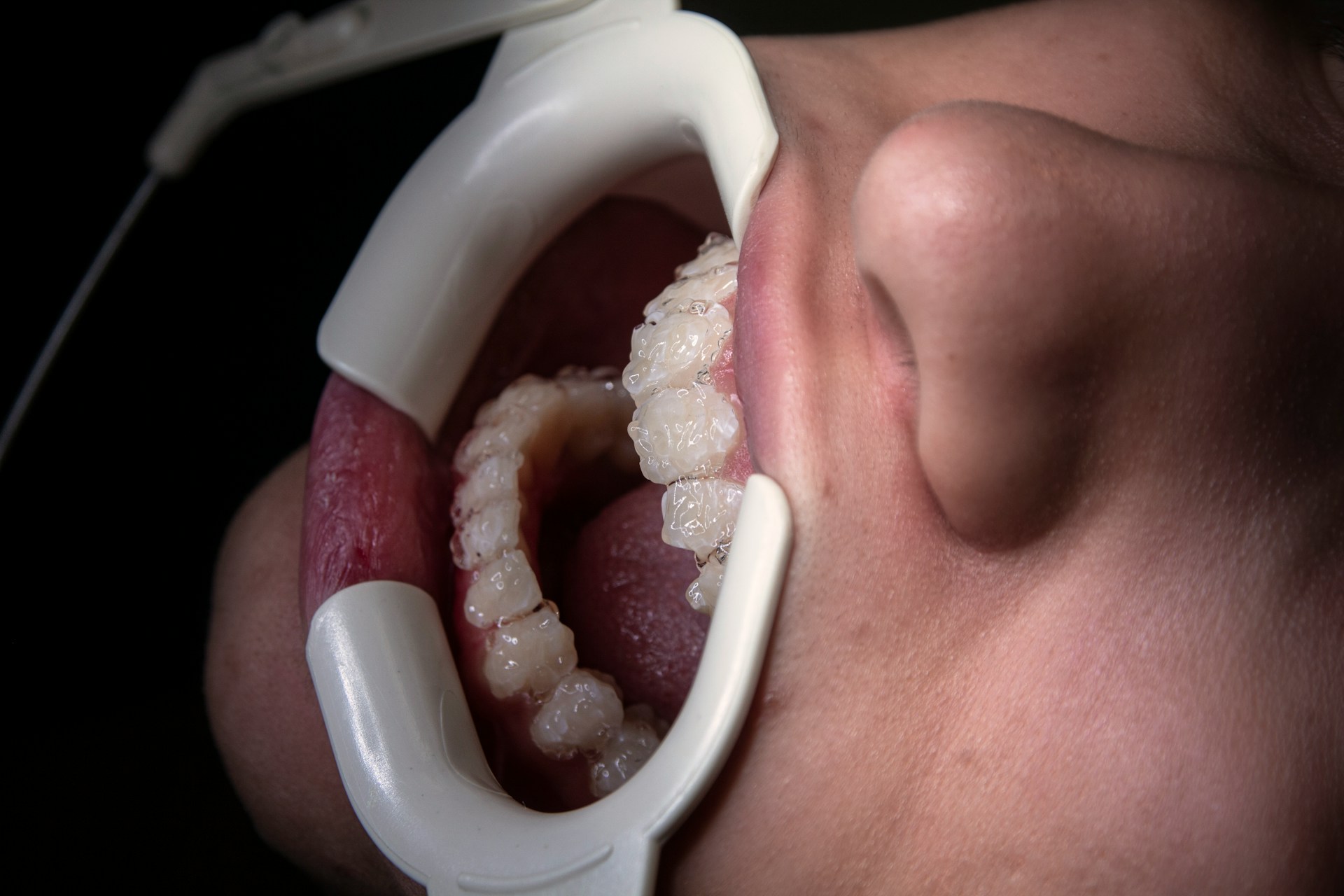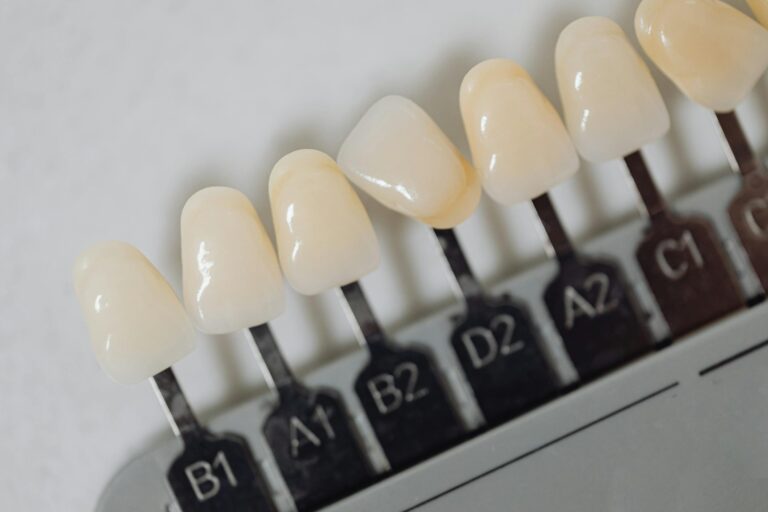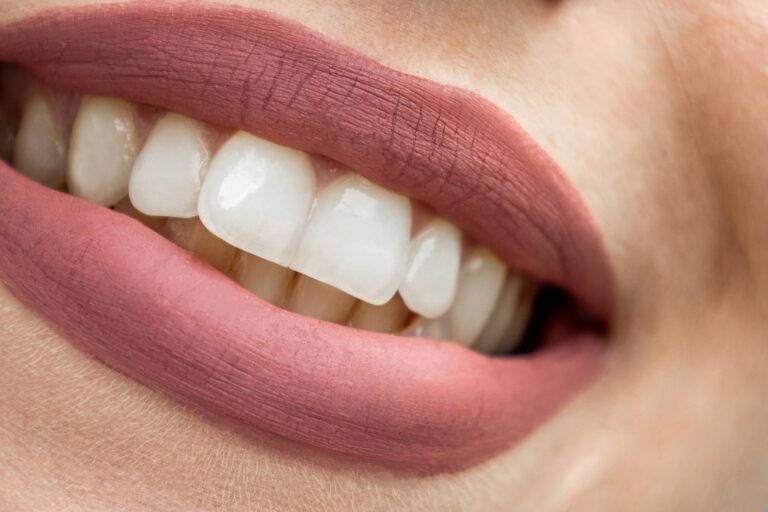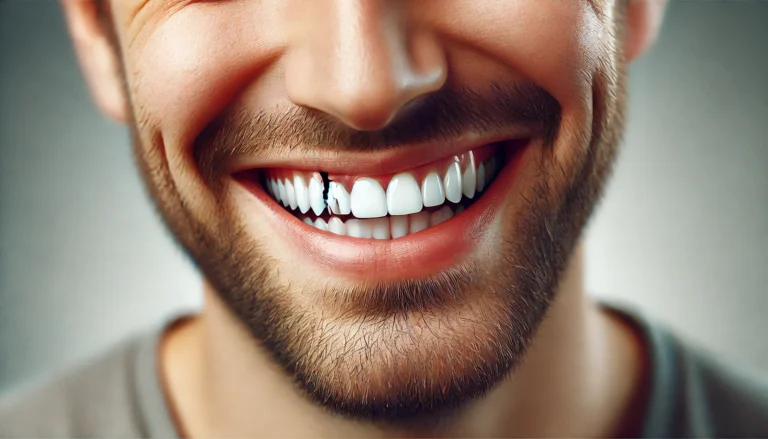
Dental bonding is a well-regarded cosmetic dentistry procedure that can significantly enhance your smile with relatively minimal effort and cost. If you are seeking a swift solution to address issues such as chips, gaps, or discolouration in your teeth, bonding may indeed be an excellent option for you.
This article will delve into the details of dental bonding, highlighting its various benefits and outlining how the procedure is conducted. Additionally, essential tips on how to maintain dental bonding for years to come, along with a discussion of potential risks, will be provided to ensure you have all the necessary information to make a confident decision.
What is Dental Bonding?

Dental bonding is a cosmetic dental procedure that employs tooth-coloured materials, commonly composite resin, to enhance the appearance of teeth while effectively addressing various dental issues such as cracks and chips.
This widely adopted treatment not only improves the aesthetics of your smile but also contributes significantly to overall oral health by repairing damaged teeth and preventing further decay.
Typically, dental bonding is carried out by skilled dental professionals who use specialised adhesives to create a strong and durable bond with the existing enamel.
What are the Benefits of Dental Bonding?
Dental bonding presents a range of benefits that make it a popular option for patients aiming to enhance their smiles or repair damaged teeth.
Dental bonding is quite cost-effective, requiring a smaller investment compared to dental crowns or veneers. Additionally, the procedure is relatively quick and straightforward, making dental bonding compared to dental crowns a more time-efficient option, as it often eliminates the need for multiple dental appointments while providing immediate improvements in dental aesthetics.
Additionally, when maintained properly, dental bonding offers impressive longevity and wear resistance, making it an effective solution for various dental concerns.
1. Cost-effective
One of the main advantages of dental bonding is its cost-effectiveness compared to other cosmetic dental treatments, such as veneers or crowns. This makes it a viable option for many patients who are looking to enhance their smiles.
Patients often discover that dental bonding fits well within their overall dental care budget, particularly when they consider the expenses associated with more invasive procedures. Typically, the costs for dental bonding range from £300 to £600 per tooth, which is considerably more affordable than veneers, which often start at around £1,000 each.
Additionally, many dental insurance plans provide partial coverage for bonding, which can help alleviate financial concerns. This affordability, combined with the relatively quick application process and minimal recovery time, makes dental bonding an appealing choice for those seeking effective dental solutions to improve aesthetics without straining their finances.
2. Quick and Easy Procedure
Dental bonding is recognised for its efficient and straightforward procedure, typically completed in a single dental visit. This allows patients to achieve quick results without the extensive time commitment often linked with other dental treatments.
During the bonding process, a tooth-coloured resin is applied to the affected area, carefully shaped to blend seamlessly with the natural aesthetics of the surrounding teeth. This efficiency not only enhances the appearance of the tooth but also supports dental hygiene, as the bonding material is designed to resist stains and wear over time.
To maintain the longevity of the bonding, routine check-ups are crucial. These appointments enable the dentist to evaluate the condition of the bonding and offer maintenance tips to ensure its durability.
Aftercare is also vital; patients are encouraged to avoid hard foods and maintain good oral hygiene practices. This helps preserve their beautifully restored smiles, allowing them to enjoy an enhanced sense of confidence in no time.
3. Natural-looking Results
One of the most attractive features of dental bonding is the natural-looking results it delivers. This is primarily due to the use of composite resin, which can be colour-matched to your existing teeth, ensuring a seamless integration with your smile.
This innovative approach to cosmetic dentistry presents a remarkable alternative to other options such as veneers or crowns, which often involve more extensive procedures. Skilled dental professionals carefully select the appropriate shade of bonding material, allowing them to create restorations that not only enhance appearance but also uphold the integrity of dental health.
The versatility of composite resins allows for customised solutions, instilling confidence in patients as they restore damaged or discoloured teeth with ease. The layering technique used during the bonding process produces a natural translucency that closely resembles real teeth, setting it apart from traditional cosmetic options and underscoring its significance in modern dentistry.
4. Versatile Use
Dental bonding is a highly versatile treatment option that can address a wide range of dental concerns, such as repairing chips and cracks, closing gaps between teeth, and reshaping or lengthening teeth to achieve a more harmonious smile.
This technique has become a crucial aspect of restorative dentistry, as it not only tackles cosmetic imperfections but also contributes to overall dental health. Through comprehensive dental consultations, patients can evaluate their specific needs, allowing practitioners to recommend customised bonding treatments that best suit them.
Various bonding assessments are conducted to ensure that the material selected aligns with the dental issues at hand, whether they involve minor aesthetic concerns or more significant structural restorations.
Furthermore, implementing effective prevention strategies—such as maintaining excellent oral hygiene—can enhance the longevity and success of dental bonding applications, ensuring that both functionality and aesthetics are preserved over time.
How is Dental Bonding Performed?

The process of dental bonding consists of several important steps that dental professionals follow to achieve effective and lasting results.
It begins with a comprehensive examination of your teeth to evaluate the necessity of bonding and to determine the most suitable approach for your specific dental concerns.
What are the Precautions to Take After Dental Bonding?
After receiving dental bonding, it is important to adhere to certain precautions and aftercare instructions. This will help maximise the longevity and effectiveness of the treatment while also ensuring that you maintain optimal oral health.
1. Avoid Hard, Sticky, or Staining Foods
To ensure the longevity of dental bonding, it is essential to avoid hard, sticky, or staining foods that could compromise the integrity of the bonding material, potentially leading to damage or discolouration.
For example, hard sweets can chip the composite resin, while sticky foods like toffee can tug at the bonding, risking its loosening over time. Staining foods, including red wine, coffee, and dark sauces, can also lead to discolouration of the bond as time goes on.
Maintaining good plaque control through regular brushing and flossing is crucial for preserving both the appearance of dental work and overall oral health.
By adopting proper oral care habits—such as using a soft-bristled toothbrush and non-abrasive toothpaste—you can significantly enhance the durability and aesthetic quality of your dental bonding.
2. Practice Good Oral Hygiene
Practising good oral hygiene is essential for maintaining both the integrity and appearance of dental bonding. This includes regular brushing, flossing, and using mouthwash to ensure that teeth and gums remain healthy.
To enhance the effectiveness of an oral hygiene routine, it is advisable to use a soft-bristled toothbrush. This type of brush cleans around the bonded areas gently, minimising the risk of damage. When brushing, employing a circular motion can be particularly effective in removing plaque.
Additionally, incorporating fluoride toothpaste into your daily routine not only strengthens tooth enamel but also helps preserve the bonding material.
Flossing is another critical component, especially when using waxed dental floss, as it effectively eliminates food particles and plaque from between the teeth, ensuring a thorough cleaning. By adhering to these practices, individuals can significantly improve the long-term success and aesthetic appeal of their dental bonding.
3. Use a Mouthguard for Sports or Teeth Grinding
Using a mouthguard during sports activities or to manage teeth grinding (bruxism) is an effective way to protect dental bonding from excessive wear and tear. This practice ensures that your treatment remains effective and that your smile stays intact.
Beyond shielding sensitive dental work, a mouthguard offers cushioning that reduces the impact of clenching or grinding, which can cause discomfort and potential damage. By wearing this protective gear, individuals not only avoid the costly repairs associated with chipped or cracked bonding but also improve their overall oral health.
The benefits of incorporating this straightforward yet effective tool into one’s routine cannot be emphasised enough, especially for those who experience stress-related teeth grinding. Therefore, investing in a high-quality mouthguard is a proactive measure towards maintaining dental integrity and ensuring the long-term safety of your bonding.
How to Maintain Dental Bonding for Longevity?
To ensure the longevity of dental bonding, it is essential to combine proper care with regular dental check-ups and mindful habits.
These practices help maintain the durability and effectiveness of the bonding material over time.
1. Attend Regular Dental Check-ups
Attending regular dental check-ups is essential for monitoring the condition of dental bonding and addressing any potential issues before they become more serious. This proactive approach ensures optimal maintenance and promotes overall oral health.
During these routine examinations, dentists not only assess the aesthetic qualities of the bonding material but also check for any signs of wear or damage that could impact its functionality.
Comprehensive oral examinations provide an opportunity for practitioners to educate patients about the best practices for maintaining their dental work, highlighting the importance of preventive care. By actively participating in these appointments, individuals can gain valuable insights into their dental health.
This knowledge enables them to address minor issues promptly, ultimately prolonging the lifespan of their bonding and enhancing their overall oral wellness.
2. Avoid Habits that Can Damage the Bonding
Avoiding certain habits, such as teeth grinding or using your teeth as tools, can greatly enhance the longevity of dental bonding and prevent unnecessary damage to the bonding material.
Failing to protect the bonding may result in cracks or even complete loss of the bonded surface, which can lead to costly repairs. Engaging in habits like biting hard objects, including ice or hard sweets, places excessive pressure on the material, which is not designed to endure such forces.
It is also essential to avoid abrasive toothpaste or overly aggressive brushing techniques, as these can degrade the bonding agent over time. Practising gentle dental hygiene and considering the use of protective mouthguards, especially during sports or if grinding is a concern, are important steps in maintaining the integrity of dental bonding.
By following these straightforward dental care guidelines, individuals can help ensure that their bonding remains intact and functional for many years.
3. Consider Touch-up or Replacement as Needed
Over time, it may become necessary to consider touch-ups or replacements for dental bonding to maintain both its appearance and functionality, ensuring that your smile continues to look its best.
There are several indicators that can signal when this maintenance is needed, such as visible chips, discolouration, or changes in how the bonding feels in the mouth. Recognising any of these signs may raise concerns about the durability of the bonding and its overall aesthetic appeal.
When discussing these issues with your dental professional, it’s crucial to communicate any changes you have noticed. This dialogue will allow them to assess the situation accurately and recommend the most appropriate course of action, whether that involves minor touch-ups or complete replacements.
Addressing these concerns in a timely manner can significantly enhance your satisfaction with the long-term results of your dental care.
What are the Potential Risks and Side Effects of Dental Bonding?

Dental bonding is typically regarded as a safe and effective procedure; however, it is important for patients to be aware of potential risks and side effects.
These may include sensitivity, discolouration, and the chance of chipping or breaking.
1. Sensitivity
Sensitivity following dental bonding is a concern that some patients may experience, often presenting as discomfort or increased sensitivity to temperature changes. Fortunately, this can usually be managed with proper aftercare and guidance from dental professionals.
Several factors can contribute to this sensitivity, such as the type of bonding material used, the condition of the underlying tooth structure, and individual differences in how patients respond to dental procedures.
Maintaining good dental hygiene is essential; patients should be encouraged to uphold rigorous oral health practices, including gentle brushing with a soft toothbrush and using non-abrasive toothpaste. Regular dental check-ups are also important, as they can help monitor the integrity of the bonding and identify any potential issues early on.
To alleviate discomfort, patients can consider using desensitising toothpaste, receiving fluoride treatments, and discussing the option of protective coatings with their dentist. These strategies can enhance comfort and support long-term oral health.
2. Discoloration
Discolouration can indeed occur with dental bonding, particularly if proper maintenance is not observed. Therefore, it is essential to understand the factors that can lead to staining and how to effectively prevent it.
Several variables contribute to this issue, including the types of food and beverages one consumes, as well as the oral hygiene practices that may sometimes be overlooked.
For example, frequent consumption of dark-coloured liquids, such as red wine, tea, or coffee, can significantly affect the appearance of bonded teeth. Additionally, plaque build-up can worsen discolouration, highlighting the importance of maintaining a consistent plaque control routine.
Utilising whitening toothpastes or specialised dental cleansers can be quite helpful in preserving the appearance of dental bonding. Moreover, ensuring regular dental check-ups and professional cleanings is vital in preventing discolouration and supporting overall oral hygiene.
3. Chipping or Breaking
Chipping or breaking of dental bonding can occur as a result of excessive bite force or improper care, highlighting the importance of mindful practices and regular maintenance to maintain its integrity.
Individuals who have habits such as teeth grinding, chewing on hard objects, or using their teeth as tools are at a greater risk of compromising the quality of the bonding. Additionally, poor oral hygiene can weaken the bond over time, making it essential to follow dental advice carefully.
To reduce these risks, it is advisable to wear a mouthguard during sleep if grinding is an issue and to avoid sticky or hard foods that could put extra stress on the bonded areas.
Regular dental check-ups are also beneficial, as they allow for monitoring the condition of the bonding and addressing any potential concerns before they become significant problems.
4. Allergic Reactions
While allergic reactions to the materials used in dental bonding are quite rare, it is essential for patients to inform their dental professionals about any known allergies before undergoing the procedure.
This proactive communication contributes to a safe and comfortable experience. Patient education is crucial in identifying potential risks, as individuals might not always be aware of the specific components found in dental bonding materials.
Through open discussions during dental consultations, professionals can equip patients with valuable information regarding the materials being used, their potential allergens, and the signs of an allergic reaction.
This collaborative approach fosters trust and understanding, ultimately leading to improved treatment outcomes and ensuring patient health throughout the bonding process.
Frequently Asked Questions: How to Maintain Dental Bonding for Years to Come
How often should I schedule dental appointments to maintain my dental bonding for years to come?
It is recommended to schedule regular dental appointments every 6 months to ensure proper maintenance of your dental bonding.
Can I still eat normally with dental bonding?
Yes, you can continue to eat your favourite foods with dental bonding. However, it is best to avoid hard or sticky foods that may damage the bonding material.
Will dental bonding stain like natural teeth?
Dental bonding is resistant to staining, but it can pick up stains from dark-coloured foods and drinks. It is important to brush and floss regularly to prevent discolouration.
How can I prevent chipping or breaking of dental bonding?
To prevent chipping or breaking, avoid habits such as nail-biting, chewing on pens or ice, and using your teeth to open packages. Additionally, wear a mouthguard when participating in sports.
Can dental bonding be repaired if it gets damaged?
Yes, dental bonding can be repaired if it gets damaged. It is important to visit your dentist as soon as possible for a proper repair to prevent further damage.
Are there any special care instructions for dental bonding?
To maintain your dental bonding for years to come, it is important to maintain good oral hygiene habits such as brushing twice a day and flossing daily. It is also recommended to use a non-abrasive toothpaste and mouthwash.






